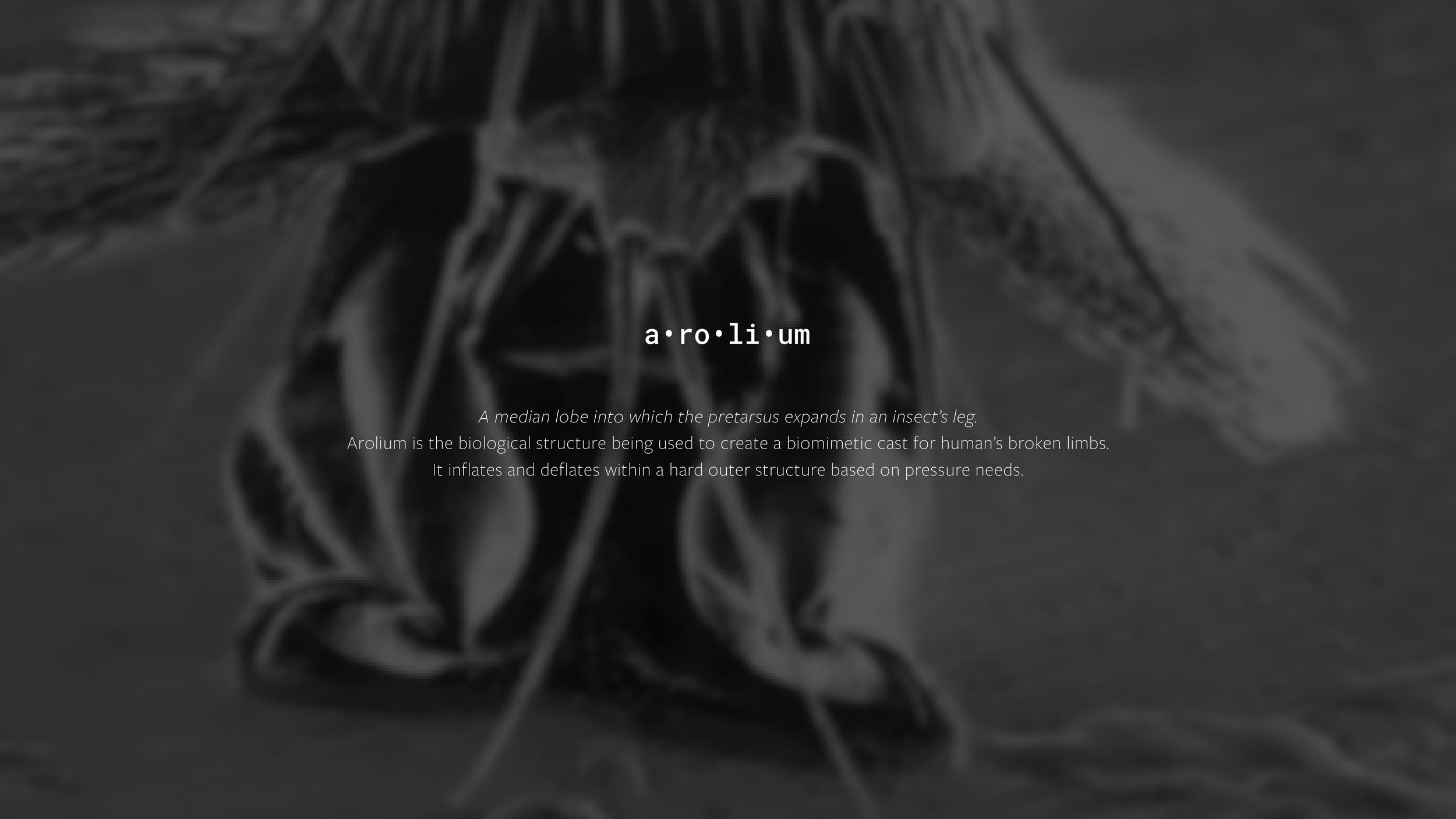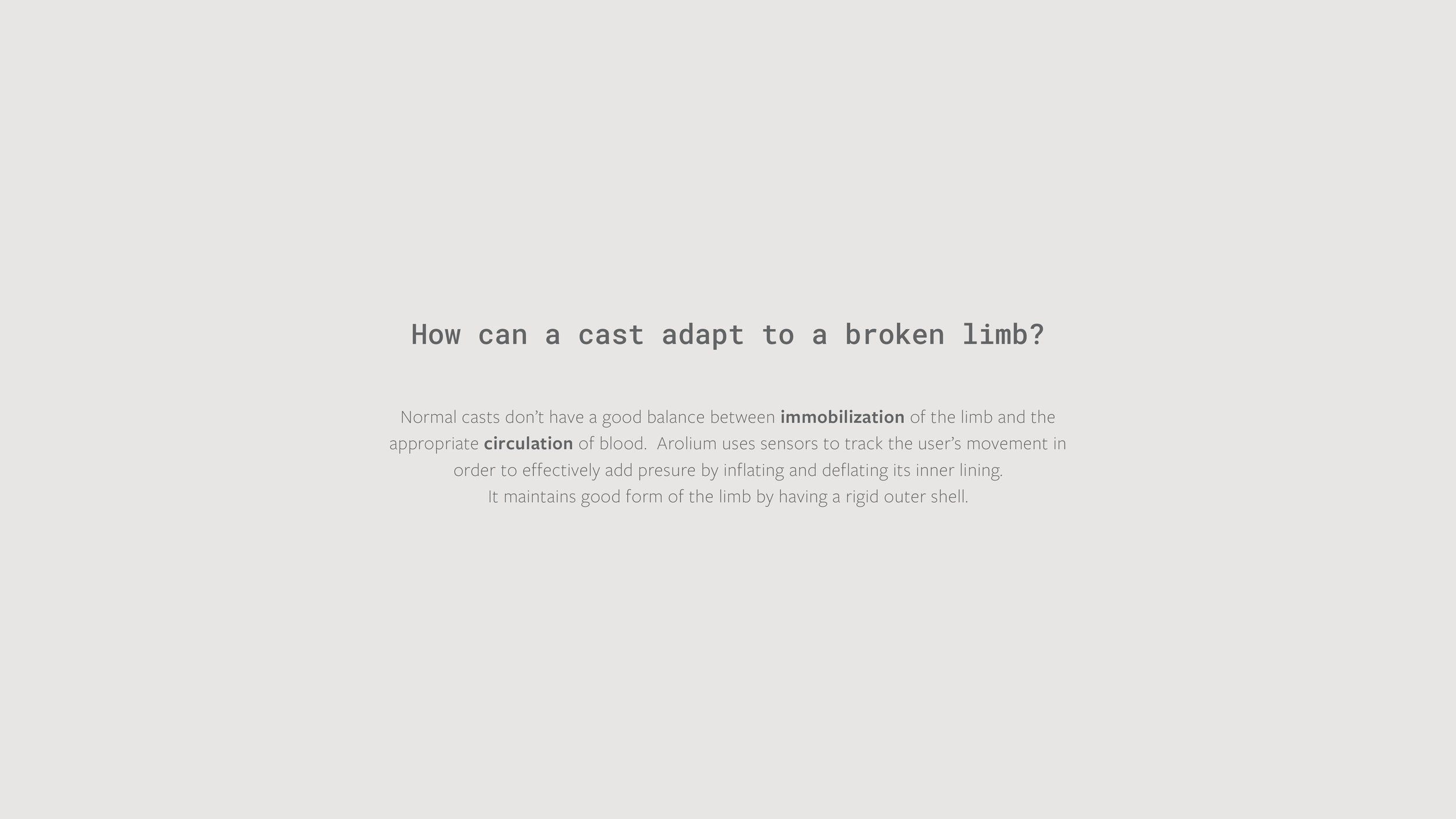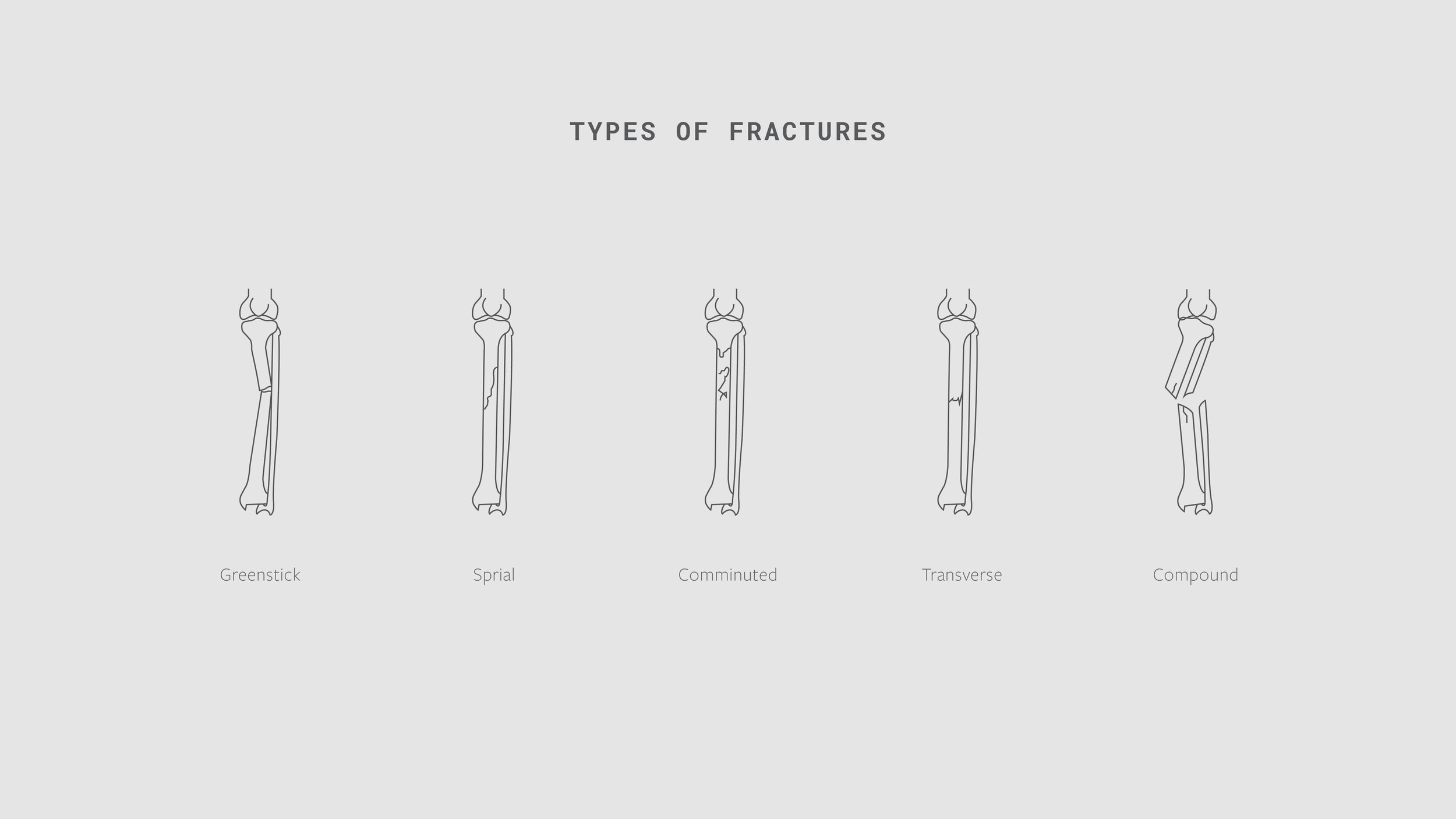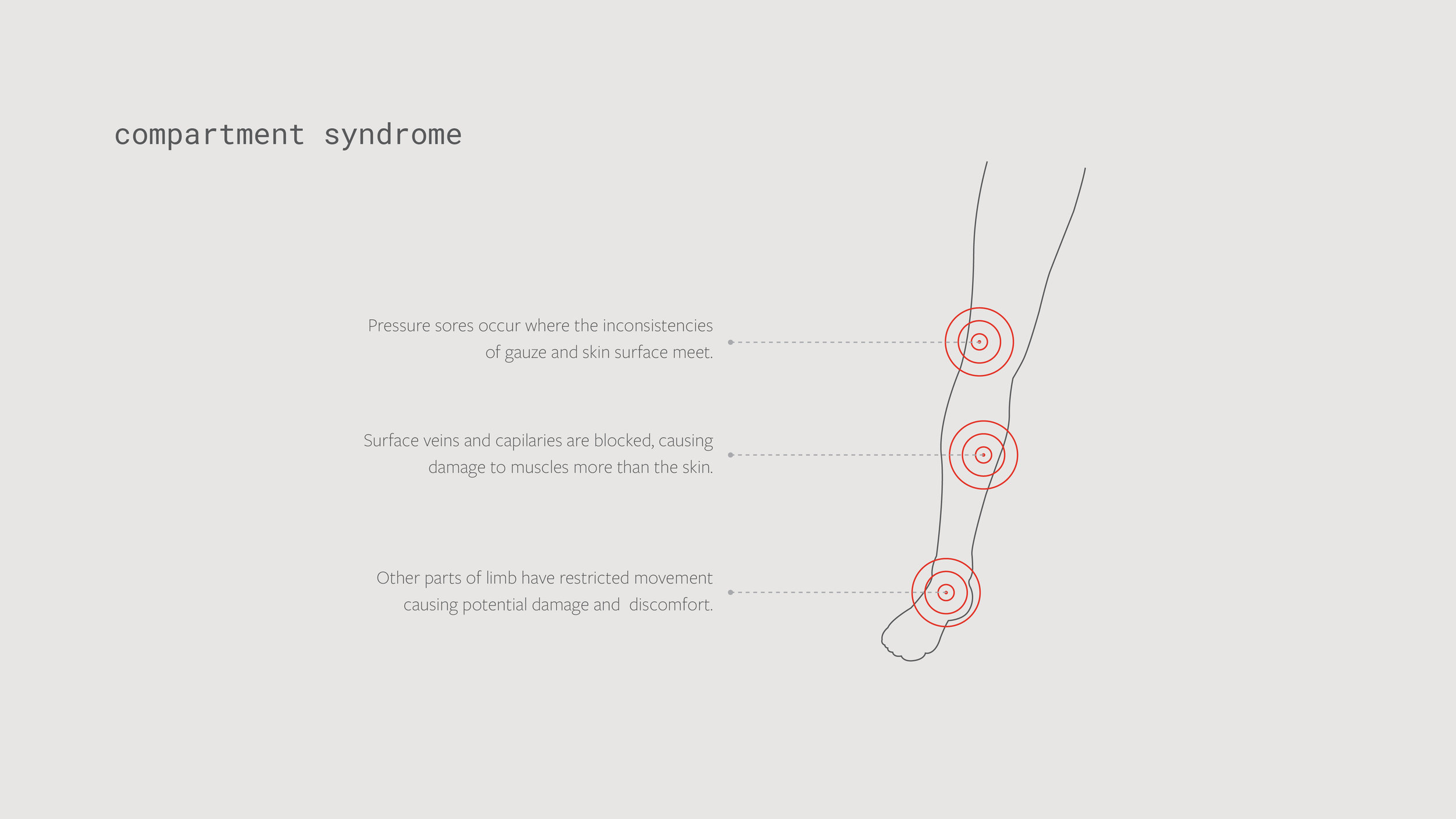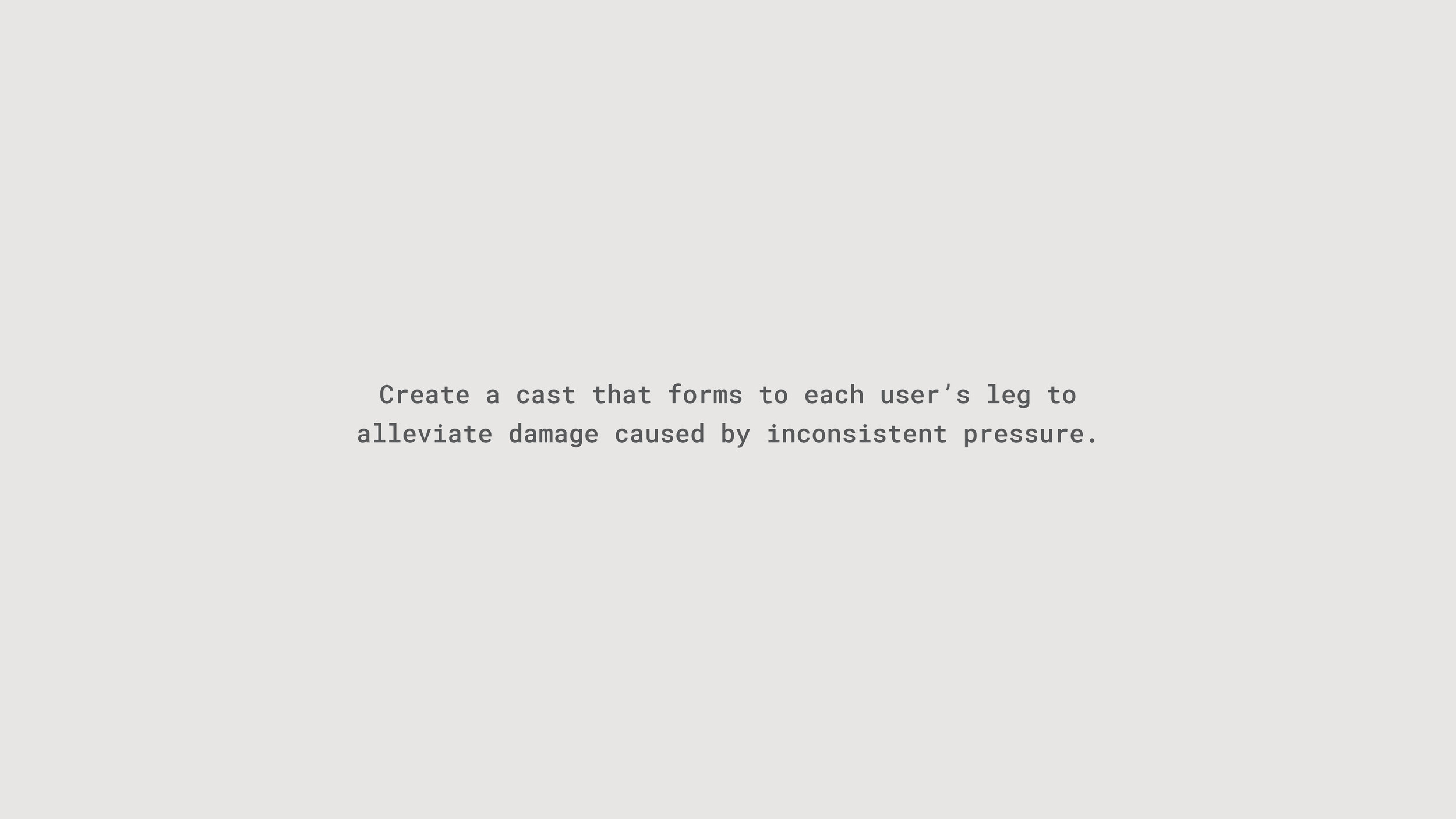Patient compliance is one of the leading deterrents in effective post-operative recovery and chronic treatment.
Normal casts don’t have a good balance between immobilizing the limb and enabling blood circulation. Additionally, a patient’s behavioral tendencies (i.e. removing the cast for too long, staying in one position for too long, etc.) contribute to a less efficient recovery experience. Arolium uses sensors to track the user’s movement in order to analyze the orientation, and then effectively adds or reduces pressure by inflating and deflating its inner lining:
Vertical orientation: air-bladders would inflate and tighten around the leg to promote stability of the limb
Horizontal orientation: air-bladders would deflate and loosen around the leg to promote the circulation of blood
In addition, the tracked data could be sent to the doctor and the patient to see their movement trends and further improve their mobility while recovering. The inflation mechanism is inspired by the biological structure of an ant’s foot, which puffs up to adhere to irregular surfaces.
Details
Designed at North Carolina State University, tested at Royal College of Art and Imperial College London.


